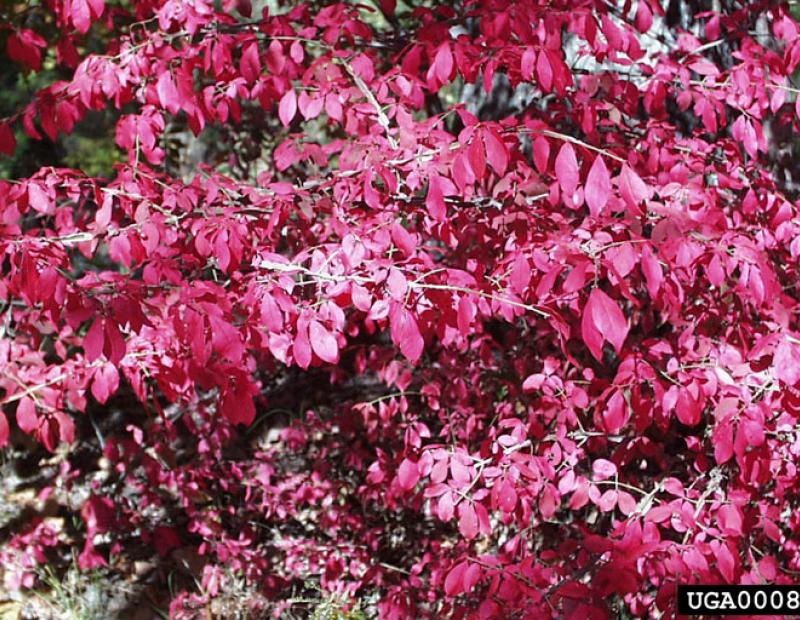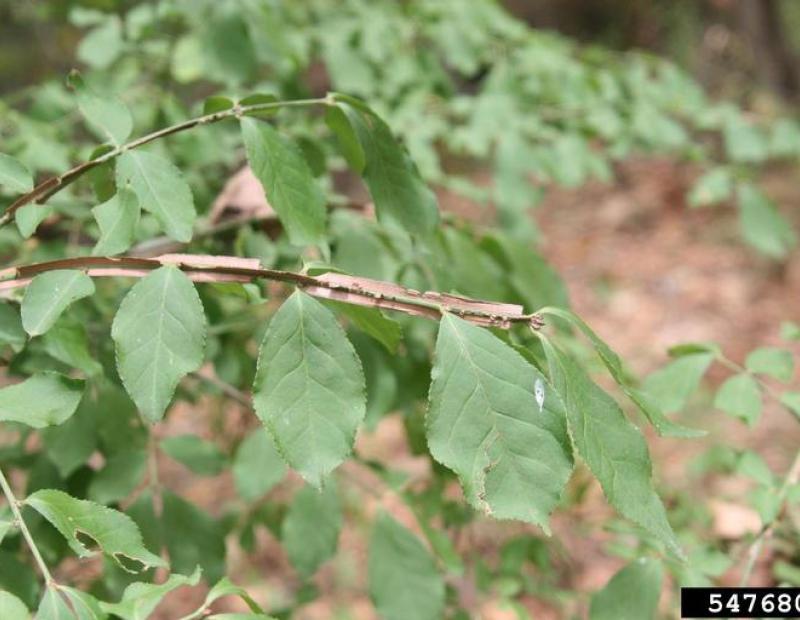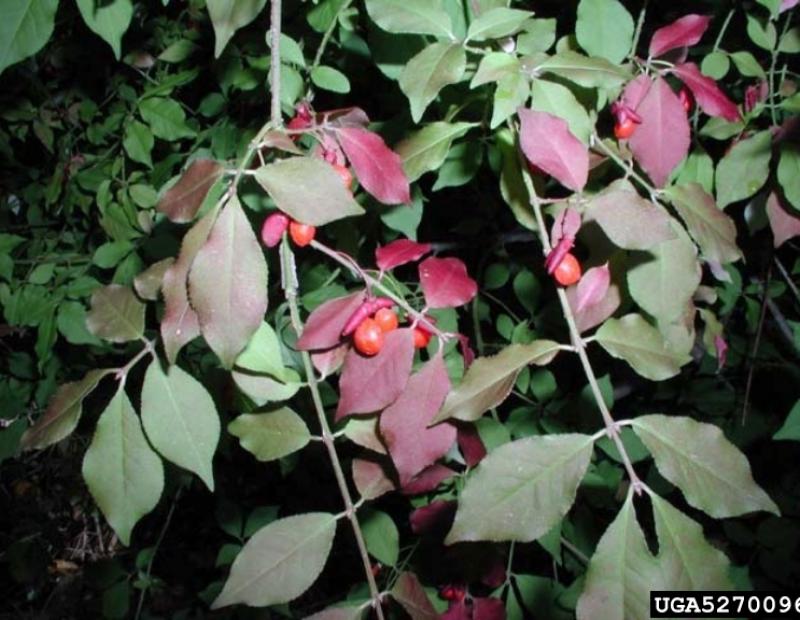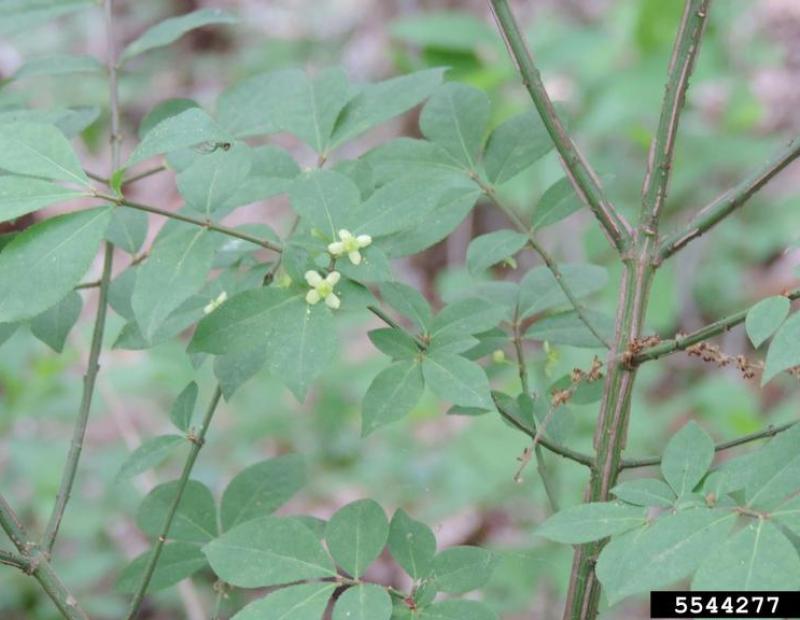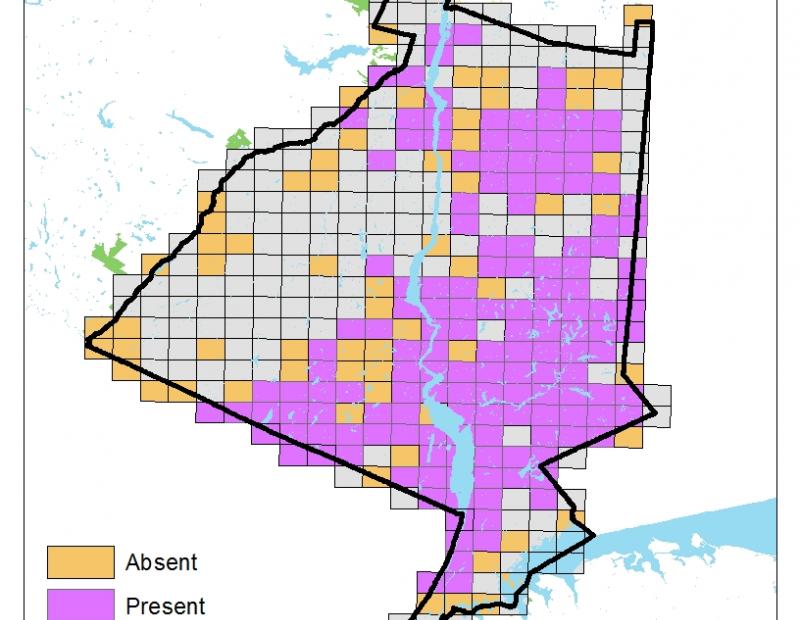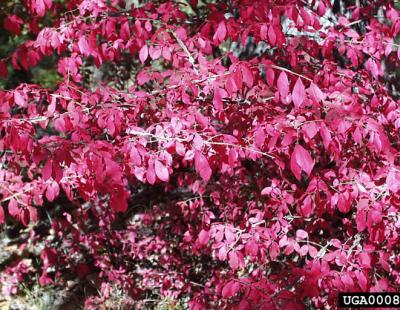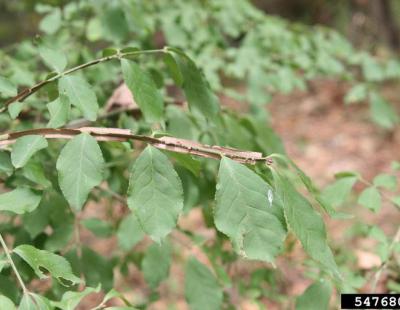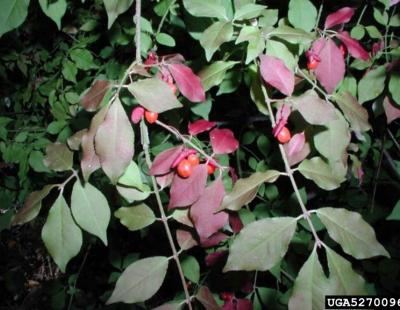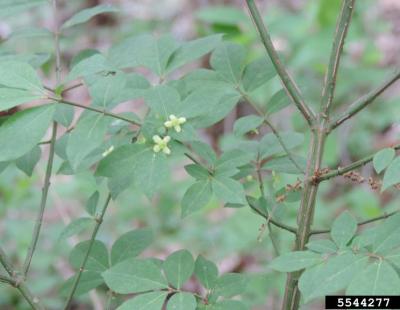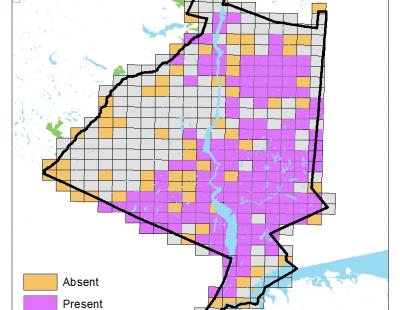Vertical Tabs
Burning bush is a deciduous bushy shrub in the bittersweet family (Celastraceae) that grows to 15 to 20 feet tall and equally as wide. It is multi-stemmed with a broad closed crown. The green to brown stems have two to four prominent corky wings. The elliptic leaves are simple, opposite or sub-opposite, 1 to 3 inches long and 1/2 to 1 1/4 inches wide and have fine toothed margins. The leaves turn a bright red in the fall before dropping. Small green inconspicuous flowers have 4-petals and occur from May to early June. Small smooth red-orange fruits appear as stemmed pairs in leaf axils and turn purple in fall. (1)
Stem
Twigs and young branches have corky wings that are visible in any season.
Leaf
Leaves are oppositely paired along the stem and are finely serrated. In the fall the leaves become bright red leading to its common name, burning bush.
Burning Bush poses a threat to ecosystems by growing in dense thickets and crowding out native species. Birds feed on the red fruits every fall and consequently distribute the seeds, thus facilitating the shrub's colonization. The shrub may become a troublesome plant because of the ease with which seeds are spread, the readiness of germination, the adaptability to various soils, and tolerance of full shade. (1)
Manual or Mechanical
Hand-pull seedlings up to 2 feet tall; cut or dig out larger plants; root systems can be removed with a spading fork or pull with a weed wrench; ground out stump and paint with glyphosate immediately after cutting
Chemical
Can be effectively controlled using any of several readily available general use herbicides such as glyphosate, imazapyr, or triclopyr. Cut stumps can be sprayed or painted with glyphosate. Follow label and state requirements.(1)
The pesticide application rates and usage herein are recommendations based on research and interviews with land managers. When considering the use of pesticides, it is your responsibility to fully understand the laws, regulations and best practices required to apply pesticides in a responsible manner. At times, the pest you seek to treat may not be on a pesticide label, requiring a 2ee exemption from NYSDEC. Always thoroughly read the label of any pesticide and consult the NYSDEC or a licensed pesticide applicator with questions.

